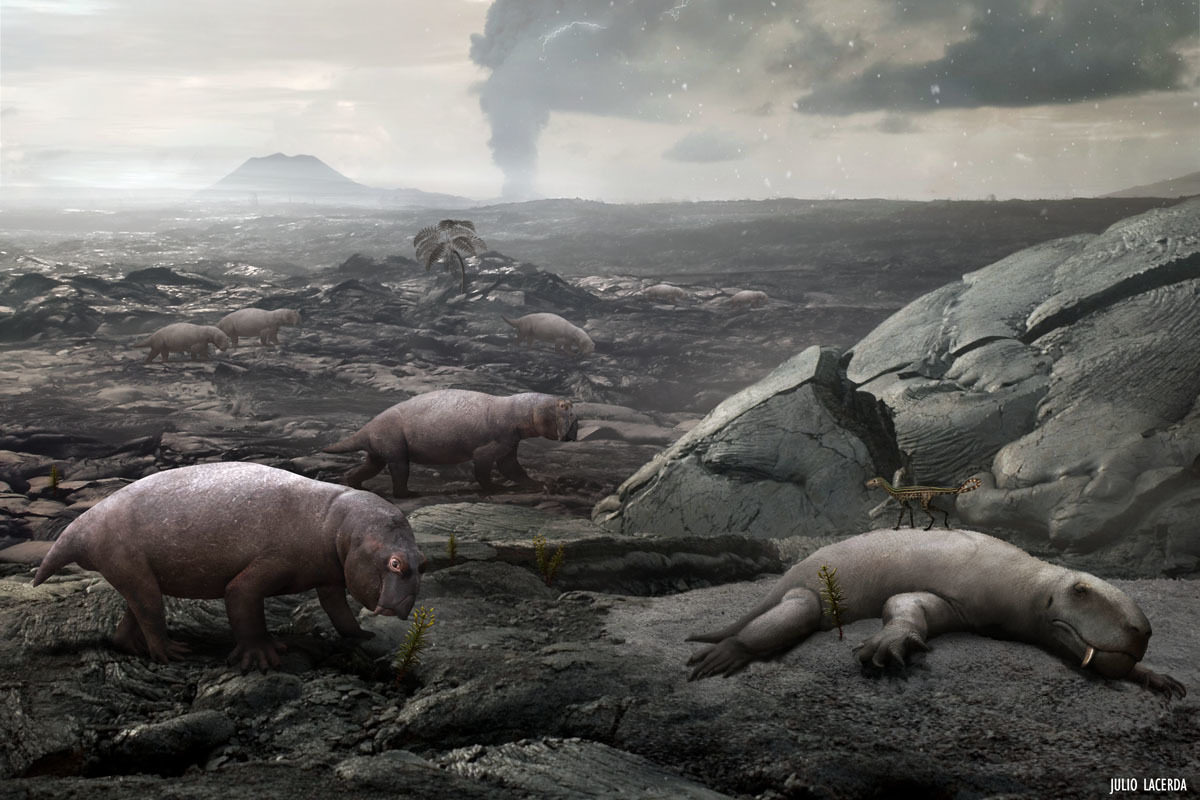
The synapsid Lystrosaurus survived the extinction and dominated the landscape afterwards
The cause for the end Permian mass extinction, the greatest challenge life on Earth faced in its geologic history, is still hotly debated by scientists. The most significant marker of this event is the negative δ13C shift and rebound recorded in marine carbonates with a duration ranging from 2,000 to 19,000 years depending on localities and sedimentation rates. Leading causes for the event are Siberian trap volcanism and the emission of greenhouse gases with consequent global warming. Measurements of gases vaulted in calcite of end Permian brachiopods and whole rock document significant differences in normal atmospheric equilibrium concentration in gases between modern and end Permian seawaters.
The gas composition of the end Permian brachiopod-inclusions reflects dramatically higher seawater carbon dioxide and methane contents leading up to the biotic event. Initial global warming of 8-11 °C sourced by isotopically light carbon dioxide from volcanic emissions triggered the release of isotopically lighter methane from permafrost and shelf sediment methane hydrates. Consequently, the huge quantities of methane emitted into the atmosphere and the oceans accelerated global warming and marked the negative δ13C spike observed in marine carbonates, documenting the onset of the mass extinction period.
The rapidity of the methane hydrate emission lasting from several years to thousands of years was tempered by the equally rapid oxidation of the atmospheric and oceanic methane that gradually reduced its warming potential but not before global warming had reached levels lethal to most life on land and in the oceans. Based on measurements of gases trapped in biogenic and abiogenic calcite, the release of methane (of ∼3-14% of total C stored) from permafrost and shelf sediment methane hydrate is deemed the ultimate source and cause for the dramatic life-changing global warming (GMAT > 34 °C) and oceanic negative-carbon isotope excursion observed at the end Permian. Global warming triggered by the massive release of carbon dioxide may be catastrophic, but the release of methane from hydrate may be apocalyptic. The end Permian holds an important lesson for humanity regarding the issue it faces today with greenhouse gas emissions, global warming, and climate change.



Comment: Looks like we're in for a wild ride: